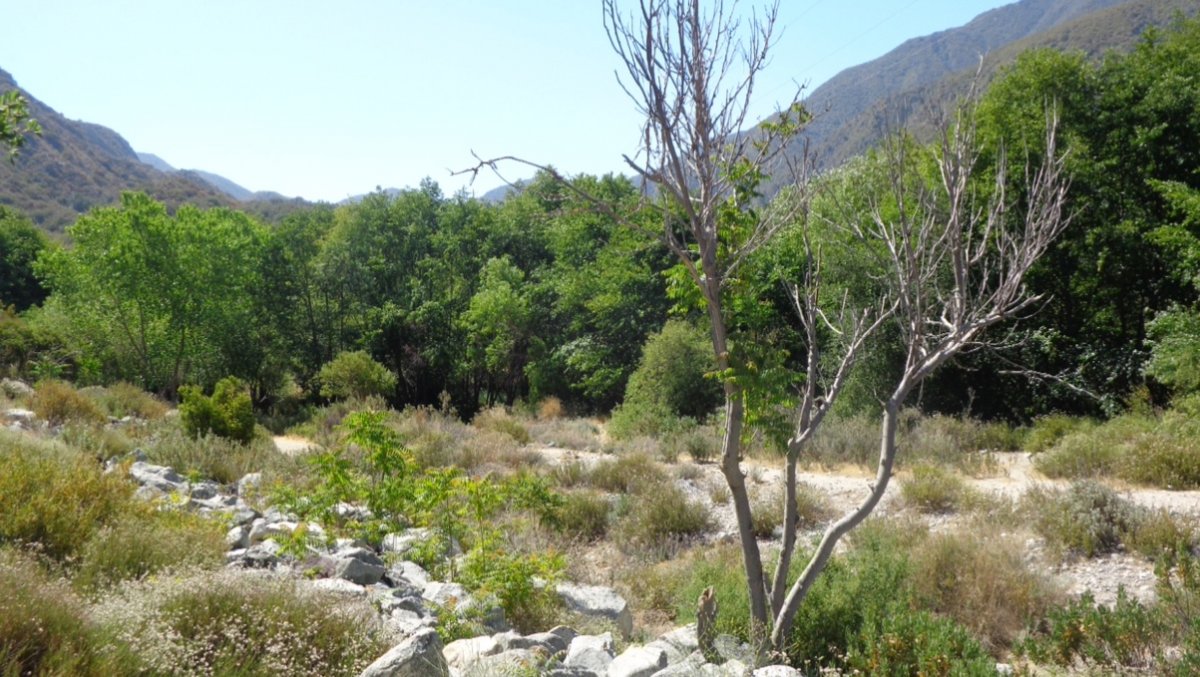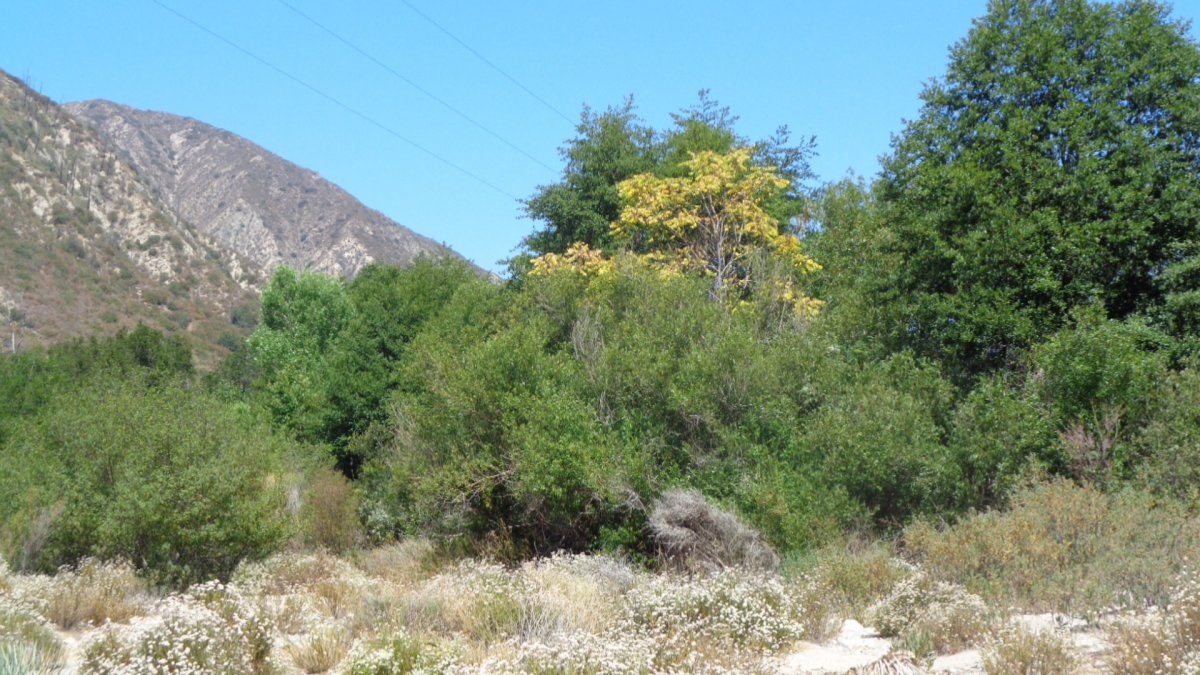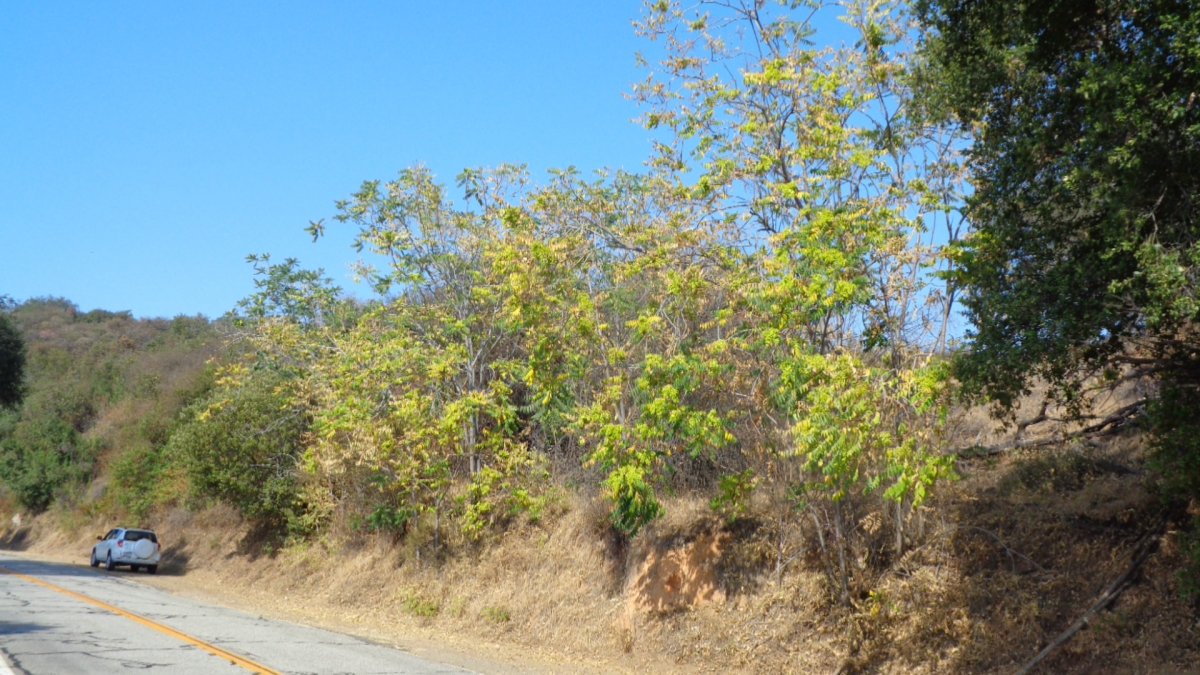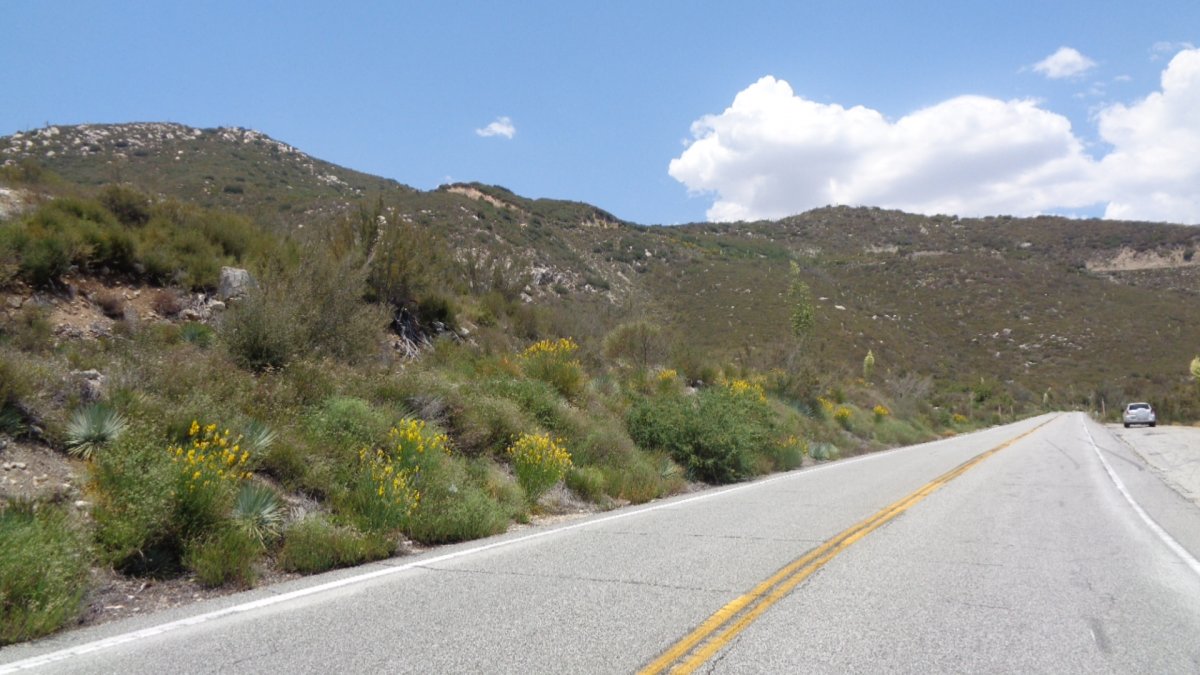August 3, 2021
During June and July I volunteered about 40 hours at controlling invasive non-native plants by herbicide application in several areas of the San Gabriel Mountains. To perform this work professionally, I hold a Qualified Applicator License from CA Dept. Pesticide Regulation; and to work as a volunteer I have a Volunteer Service Agreement from Angeles National Forest. Most members of the Angeles Chapter are not likely to attain these certifications if interested in volunteering; so this article’s limited purpose is to publicize the problem of exotic plant invasions and methods to control their spread.
First, my mini-biography in relation to the Angeles Chapter: In 1975 I started employment in Los Angeles as a petroleum geologist, and I became active with the Chapter’s Conservation Committee, specifically with the Energy and Solid Waste subcommittees. A few years later, I read about the problem of feral donkeys (aka wild burros) that were degrading desert springs and riparian areas; so with sponsorship of the RCC Desert Committee, I produced and directed a 42-minute, 35 mm educational film titled “Burros on the Desert” that was completed in 1981 and is posted on YouTube (with 225 views over 3 years).
While researching my film on burro overpopulation, at Death Valley I learned about an exotic tree, tamarisk or saltcedar from Eurasia, that National Park Service staff were removing from Eagle Borax Spring, which had been fenced to exclude burros. Results of this tree removal were dramatic – surface water appeared, marsh plants returned, native mesquite trees were invigorated, and wildlife flourished. So in 1983 I obtained a California applicator certificate and started to organize volunteer work parties to remove tamarisk from natural wetlands throughout the California desert (and occasionally other states) for the Bureau of Land Management, Nature Conservancy, National Park Service, and CA Dept. Fish & Game.
Tamarisk control was my avocation until 1998, while I was employed as a petroleum engineer in northern Orange County. This involved felling trunks with chainsaws and spraying the stumps with a broadleaf herbicide named Pathfinder II (chemical name – triclopyr), or girdling trunks with a hand ax and spraying the cuts, or spraying the bark of smaller trunks without cutting, which is called a “basal bark” application. For about 10 years during this period, due to my burro film experience, I chaired the Chapter’s wildlife subcommittee.
In 1999 my career as a petroleum engineer ended, so I commercialized my hobby by forming a partnership business named Riparian Repairs, and moved my activity from desert to coastal watersheds, supported mostly by mitigation projects and grants to local non-profit organizations. I mostly ended control work on tamarisk, which by then was targeted by an imported beetle for biocontrol; and after purchasing a backpack sprayer, I concentrated on about 30 invasive plant species in urban wildland areas, including Arundo, castor bean, Ailanthus (Chinese tree of heaven), perennial pepperweed, passion vine, fennel, Spanish broom, pampas grass, fountain grass, fig tree, Mexican fan palm, non-native thistles and other exotic trees and shrubs.
My activity in the San Gabriel Mountains began after the large Station Fire of 2009. At the time, Angeles National Forest did not have approval for widespread herbicide applications, but I worked to control post-fire Arundo, Ailanthus and Spanish broom on private inholdings in Big Tujunga Canyon, paid by a grant to the Los Angeles County Weed Management Area. Subsequently, starting in 2016, nearly all Arundo (Arundo donax) was removed or controlled in Big Tujunga Canyon by other contractors funded by grants to the National Forest Foundation; and concurrently, funded by the same grants, I worked to control Arundo downstream on Big Tujunga Wash in Hansen Dam flood control basin, as reported in this online article.
In 2016 I started volunteer work in Big Tujunga Canyon by treating Ailanthus near Stonyvale Picnic Area. The recent photo below, taken from the parking lot, shows the result of that initial treatment: a mostly dead large parent tree treated by basal bark application of Pathfinder II; plus nearby (in boulders left of the large tree), partly dead saplings (which are clonal root suckers) that I foliar sprayed with diluted imazapyr herbicide.

After a three-year absence from volunteering while at Hansen Dam basin, this year I returned to Big Tujunga Canyon briefly in February and consistently in early June, after working during the spring months at Malibu Creek State Park. In the photo below, the yellow foliage is several adjacent tall Ailanthus trees two weeks after treatment by basal-bark application of Pathfinder II herbicide. In front of and below the tree is grey dead biomass of a large Spanish broom (behind the buckwheat, before the green willows) that I treated by the same method last February.

As I worked east or upstream from Stonyvale Picnic Area, along the lower quarter-mile of the Grizzly Flat Trail, I found abundant Spanish broom shown below with yellow flowers, which I foliar sprayed with either Milestone or Transline herbicide mix. These two herbicides are specific to legume and composite plants families and generally do not harm other plant families.

Moving eastward to the watershed of the San Gabriel River, in mid-June I found and treated a quarter-acre Ailanthus grove at the west end of Glendora Ridge, accessed from Glendora Mountain Road. The photo below was taken 3 weeks after basal bark treatment of Ailanthus trunks, which yellowed the foliage. Ailanthus often grows in dense groves with numerous saplings which sprout from shallow lateral roots. Within these groves, native trees and shrubs are less common because Ailanthus roots emit allelopathic chemicals that inhibit the growth or vigor of other plants. Further east on Glendora Ridge, with dilute Transline herbicide I sprayed small patches of Spanish broom dispersed along 7 miles of Glendora Ridge Road, which generally were confined to the road berms and had not infested adjacent slopes.

On an earlier trip to Crystal Lake Campground in 2019, I noticed a concentration of about 50 Spanish broom plants next to Highway 39 near the 5000-foot elevation sign, which were not present further up the road. I intended to control these plants starting a year ago but could not because a wildfire near Azusa closed the Highway 39 temporarily and then the large Bobcat fire closed the forest for several months. In mid-June I returned and in 30 minutes I sprayed dilute Milestone herbicide on most flowering broom plants shown below, where not intergrown with natives. I was annoyed to see that the broom infestation was larger than I expected, extending uphill along an abandoned service road toward a large patch of flowering broom next to highway road cuts at a higher level in the distance. In early July I volunteered 3.5 hours to spray much of the upper infestation, where Spanish broom was confined to the road berm and had not spilled over to steep slopes below. In this case my strategy is containment, which is achievable, not eradication which would be difficult.

For more discussion about impacts caused by invasive plants and about control methods using herbicide, I recommend a 1998 article published by the California Native Plant Society, “The Role of Herbicides in Preserving Biodiversity” by Jake Sigg, posted at this link.
Bill Neill is an Angeles Chapter member and Secretary of Angeles Chapter Foundation